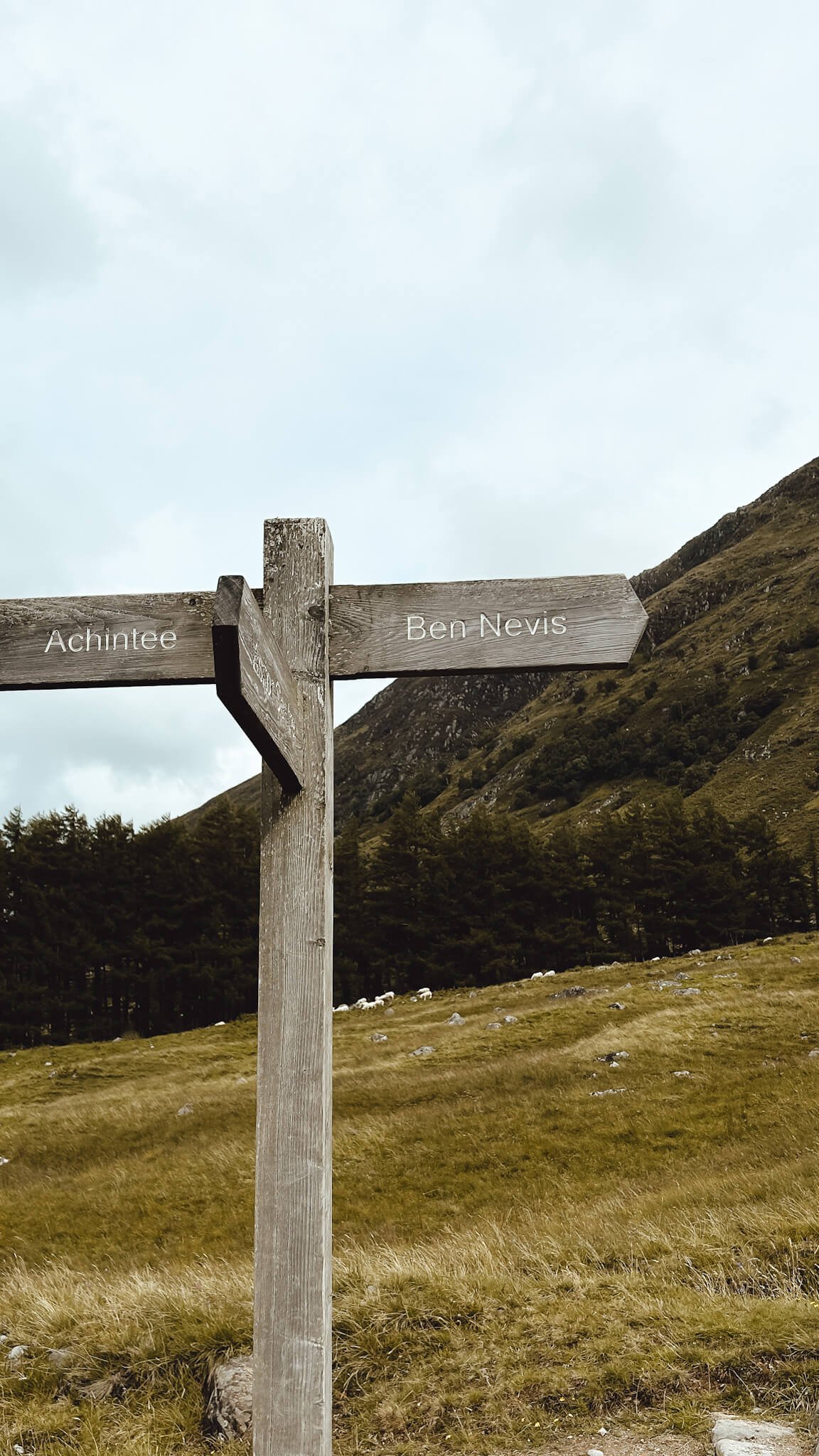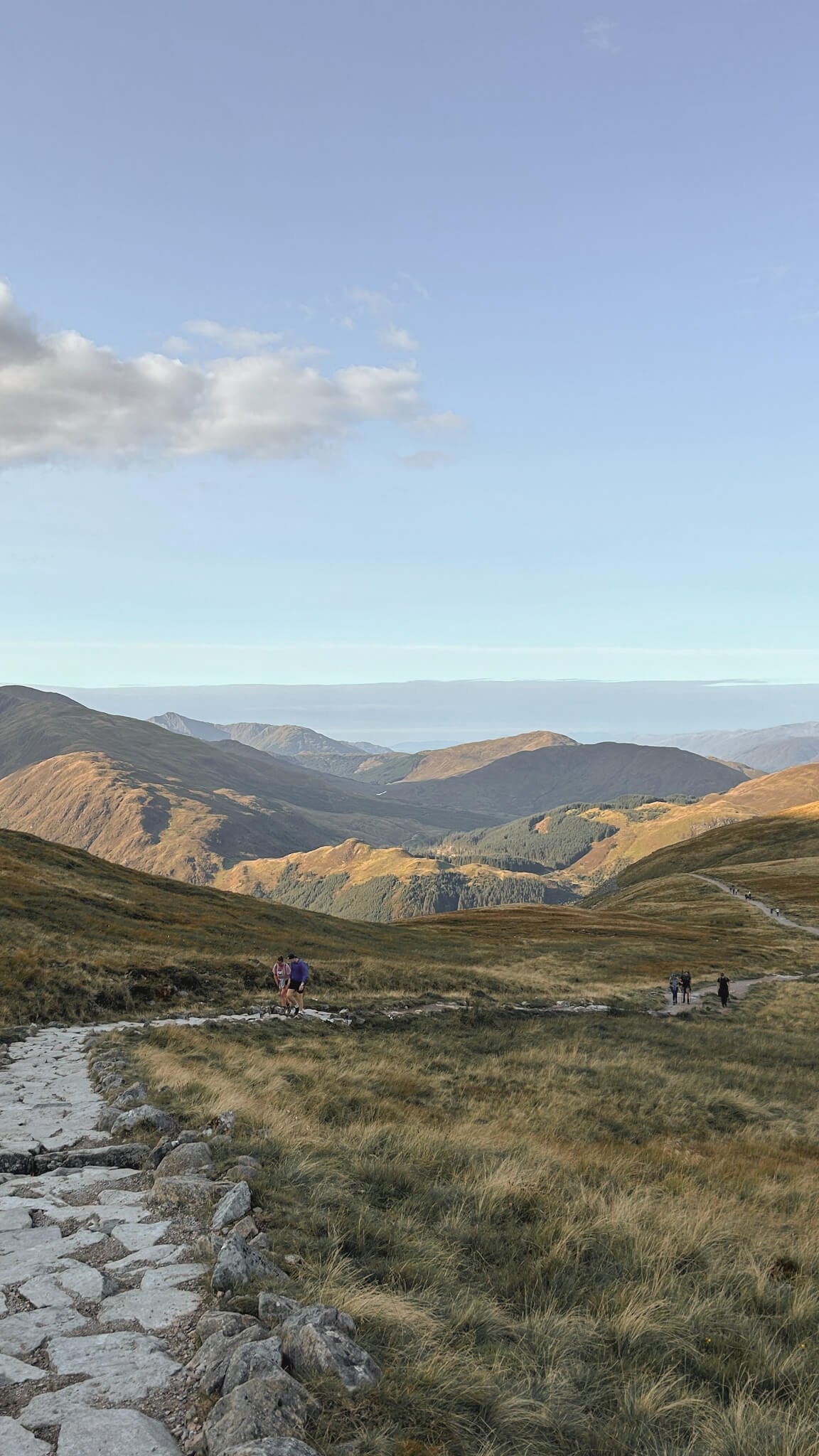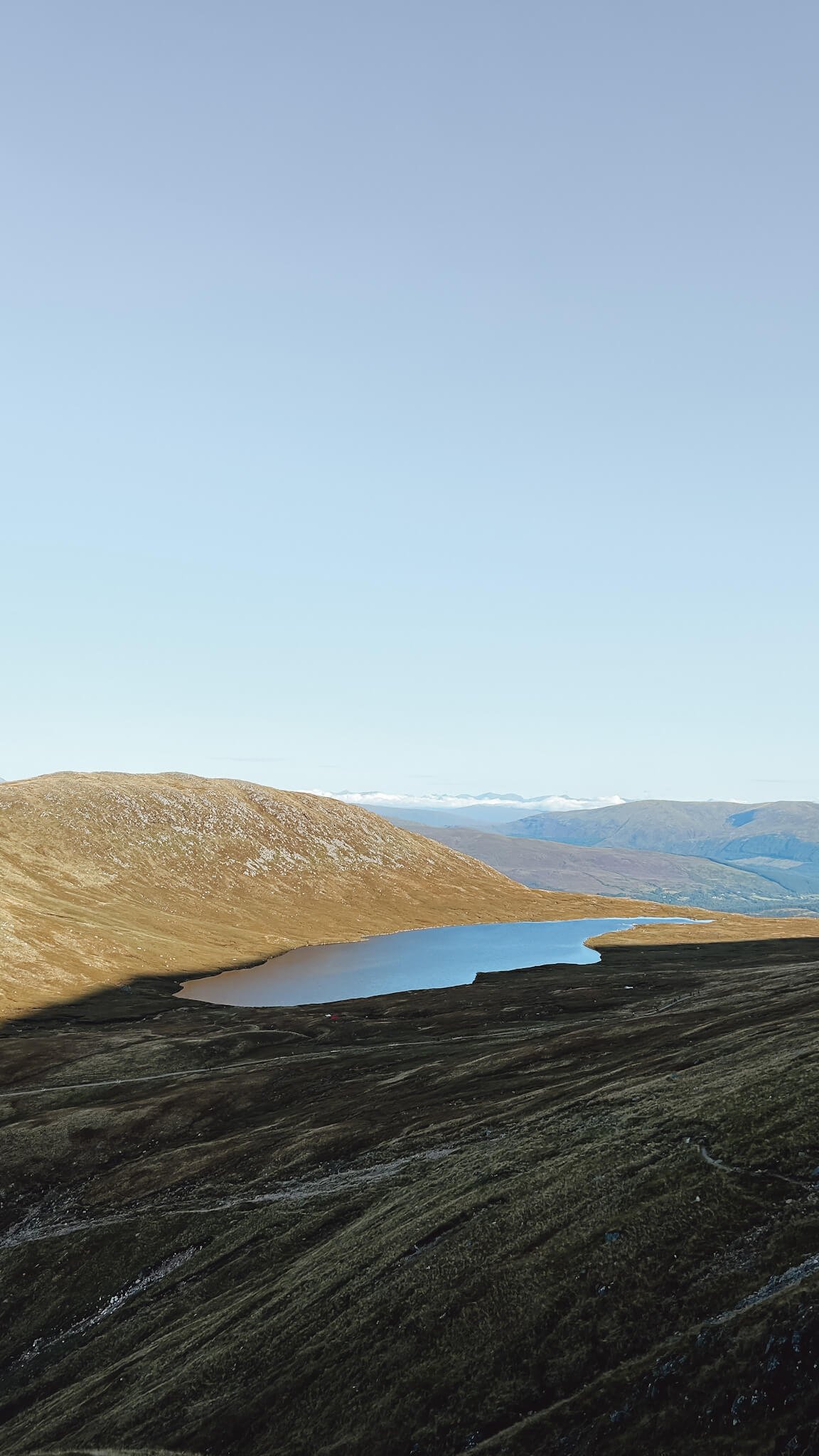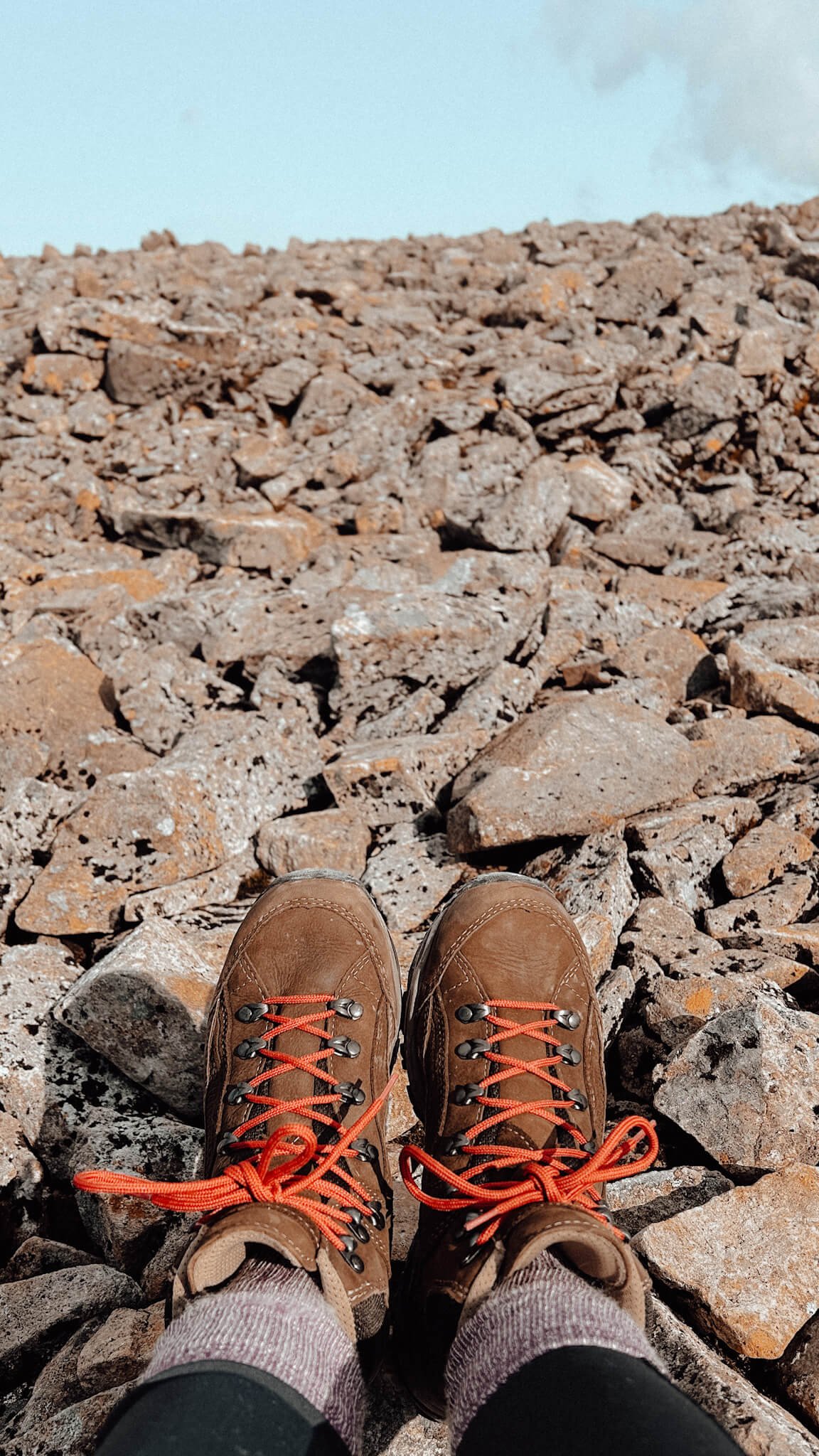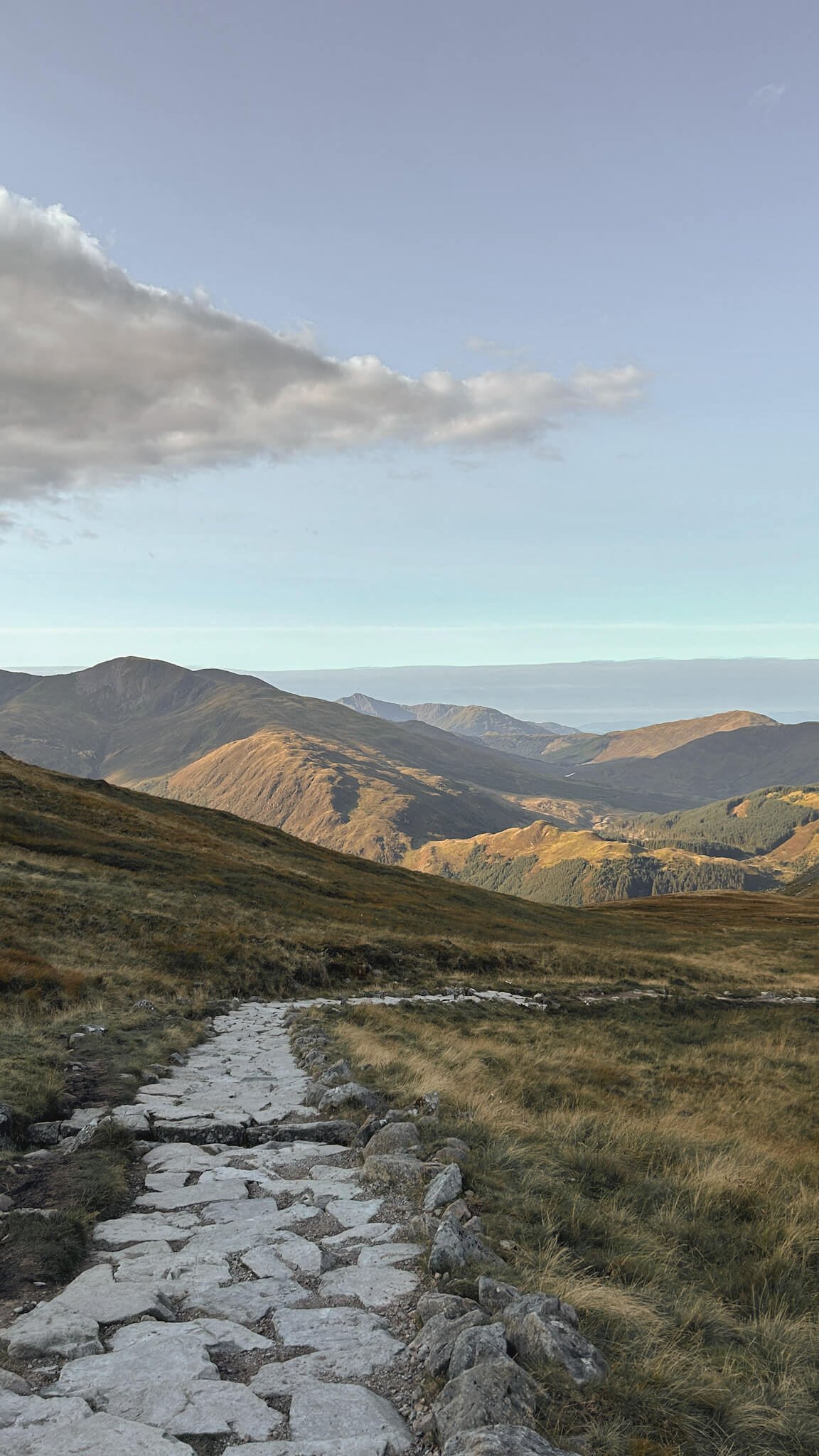Climbing Ben Nevis: Your Complete Guide to Scotland’s Highest Mountain
Thinking about climbing Ben Nevis, but unsure what it’s really like? As someone who lives in the Highlands and has climbed “The Ben” more times than I can count, I know exactly what it takes to reach the summit safely — and enjoy the journey. This is your no-fluff, expert-backed guide to climbing Ben Nevis, written with input from a qualified Mountain Leader. Whether you're a first-timer or just want to be better prepared, you'll find everything you need to know here.
By: Lesley Stewart | Fully updated July 2025
Climbing Ben Nevis, the UK’s highest mountain, is a bucket list moment for many travellers.
A popular hike amongst outdoor enthusiasts and novice walkers alike, the Ben Nevis climb is a challenge for anyone who takes on the mountain path. Fuelled by a boom in adventure travel, the number of people tackling Ben Nevis has grown in the last few years, and, like other nearby iconic mountains, it’s become an in-demand destination in its own right.
A big reason for this is undoubtedly the clear track from car park to summit, meaning it’s a surprisingly easy route to follow and you can enjoy the utterly stunning views with very little navigational effort.
However, don’t be fooled into thinking this is an easy hike.
Ben Nevis is a tough and challenging climb - one that requires a pretty decent level of fitness, good clothing, study footwear, and, frankly, grit.
Plus, not all days on Ben Nevis are created equal. And a positive mental attitude to often required, especially to handle the unpredictable Scottish weather, like driving rain, mist, and wind that whip up seemingly out of nowhere.
Climb Ben Nevis with Confidence
Planning to summit the UK’s highest mountain but feeling unsure where to start? This expert-written guide takes the stress out of preparation — no vague advice, no guesswork. Just clear, local insight from a qualified mountain leader who’s climbed Ben Nevis hundreds of times.
✅ Route breakdowns
✅ Timing & weather tips
✅ What to pack (and what to leave)
✅ Safety checklists
Perfect for first-timers, solo walkers, or anyone who doesn’t want to wing it on the mountain. Get your downloadable guide here!
I’ve climbed Ben Nevis many times, in both spring and late autumn, and loved both seasons (though for different reasons). It’s easily one of my favourite Scottish mountains, and if you make it to the summit, it's very much worth the effort and sore legs!
In this post, I’m sharing all the key tips and information on climbing Ben Nevis, where to park, facilities, useful things to bring, and what to wear. Plus, how to book a qualified Mountain Leader to take care of navigation and safety.
This is how to climb Ben Nevis.
/
Climbing Ben Nevis? Here’s Our Quick Guide:
HOTELS
These are the best stays near Ben Nevis, each an easy walk, taxi, or bus to the trail start point:
Ben Nevis Guest House: popular and traditional small stay in Glen Nevis.
Nevis Bank Inn: small hotel with a brilliant restaurant and cosy rooms, just outside Glen Nevis.
Achintee Cottages: highly rated cottage perfect for groups (sleeps 4) in Glen Nevis.
The Garrison: for the best small hotel stay in the town centre.
Lime Tree: for the best boutique stay in the town centre.
/
THE START POINT
Start your hike at the Ben Nevis Visitor Centre, a small hub in Glen Nevis (here). Here, you’ll find parking, benches, toilets, and amenities. There’s a small shop, too, selling navigation tools like maps, really good takeaway coffee, and friendly staff who’ll help with tips.
THE END POINT
Head straight to the iconic Ben Nevis Inn when you finish your Ben Nevis climb. You’ll find this traditional Scottish pub at the mountain’s base (here), and it’s the perfect place to celebrate with a well-deserved beer, hearty meal, or coffee.
Ben Nevis private guide & group hikes
If you’re unsure about climbing Ben Nevis and would like a professional guide, we recommend local guide Summit Scotland.
Walking with an experienced guide means enjoying your day without worrying about logistics, navigation or safety. Plus, you have your own local tour guide on hand for restaurant recs and where to find the best pub for a celebratory drink! Check availability here.
Do I need a guide to climb Ben Nevis?
In a word, no, you don’t need a guide to climb Ben Nevis. It’s perfectly possible to climb Ben Nevis on your own, and you’ll find lots of in-depth information on a self-guided hiking route below.
However, if you’re new to hiking in Scotland, worried about the weather, the route, or finding your way, need help with outdoor confidence, or would like to join a friendly Ben Nevis group hike, then book yourself a mountain guide.
A Ben Nevis guide will plan the day, deal with the weather, give you a kit list, tell you what food to bring, and, most importantly, take care of navigation and safety on the day. Basically, a guide will take away the stress of such a big day outdoors.
Ben Nevis guide recommendation + discount:
We use a local guide, Summit Scotland, for our Ben Nevis climbs. They handle navigation, provide a kit list, and alleviate the stress of managing the unpredictable weather — and our worst nightmare, getting lost!
Use code “wander10” for an exclusive 10% discount on bookings. Book a Ben Nevis guided hike here.
Climbing Ben Nevis | The Essentials
Where is Ben Nevis?
Ben Nevis is located in Fort William, a small town in the Scottish Highlands. Walking Ben Nevis is one of the most popular things to do here, and travellers come from around the world just to hike it.
It’s also the endpoint of the equally demanding West Highland Way and a popular base for visiting nearby iconic Scottish attractions, like the wonderful Glenfinnan Viaduct.
Why is Ben Nevis so popular?
On a sunny day, hiking Ben Nevis is a beauty; sea lochs, layers of mountains as far as the eye can see, rivers and waterfalls make for a classic Highland day out.
However, as beautiful as the scenery may be, the real urge to reach the summit lies firmly in the experience. Ben Nevis is not only Scotland’s highest mountain, but the highest in the UK. Reaching the summit is a test of resilience, a challenge, and ultimate bragging rights.
Arriving at the summit cairn, even in the rain and clouds, feels frankly incredible - a rightfully proud moment at an iconic summit and an all-round amazing experience.
How high is Ben Nevis?
First up, how high is Ben Nevis? Ben Nevis's summit is 1345m (4,413ft for our US readers), making it the highest mountain in Britain. It’s also a Munro, perhaps the most popular of the 282 peaks.
Equally important is the Ben Nevis starting point, which at only 20m above sea-level means you’re in for a steep, unrelenting, uphill climb to the summit.
Be warned, hiking Ben Nevis is a leg burner!
How long does it take to climb Ben Nevis?
It takes anywhere from 5 to 10 hours to walk up Ben Nevis. That’s a big range, I know. But how long you’re on the mountain really depends on your: fitness, the weather, how busy the path is, how often you stop for photos, lunch, etc.
From experience, I’d say that personal fitness is the biggest factor in how long you’ll take to complete the hike. For me, I can get to the summit of Nevis and back down again in around 5 hours, but that’s because I live in the area and keep fit in the surrounding hills (more on that below).
If you’re not a gym-goer or keen walker, expect your Ben Nevis hike to take closer to 8 hours.
Do I need for a map for Ben Nevis?
Whilst there’s an obvious trail for pretty much all of the mountain, nonetheless it makes sense to take a map for your Ben Nevis walk. If it’s cloudy (which is often) visibility can quickly become poor and you might find it tricky to find your way off the summit. There’s a dangerous section around this area and a map will keep you on the proper trail.
Either carry a paper map and compass. Or, like me, download the this route onto your (fully charged) phone.
How difficult is the Ben Nevis Climb?
How difficult you find Ben Nevis is going to be wholly subjective. It depends on your hiking experience, your fitness, and the weather conditions.
You don’t need to be a vastly experienced hiker to climb Ben Nevis. And in terms of the route, the vast majority is easy to follow on a clear trail.
However, it is a steep and unrelenting mountain that will test both your legs and perseverance. Plus, underfoot is surprisingly tough, with rocky sections and boulders to contend with, and a few jaggy sections that require careful extremely foot placement.
Experienced hikers, especially Munro baggers, likely won’t find Ben Nevis overly difficult - though shouldn’t underestimate the gradient. However, novice walkers may struggle with a variety of factors on Ben Nevis, like the distance, steepness, and rocky terrain.
How fit do you need to be for Ben Nevis?
Whilst it isn’t the most difficult mountain, it is Britain’s highest, and that means it’s physically demanding.
So, I’d strongly recommend getting your fitness up before tackling Ben Nevis. Start with smaller hills, try some easy Munros, add incline to the treadmill, or simply make a point of walking more with a rucksack in the lead up to your hike.
It’s also important to prepare yourself mentally for Ben Nevis.
If you haven’t spent much time hiking, then walking uphill for 3+ hours (and the same back) is going to be a shock! I saw lots of people struggling and I think, honestly, it was lack of preparation. So spend time planning in advance, and I guarantee, you’ll have a far better experience on the day.
When is the best time of year to climb Ben Nevis?
The best time to climb Ben Nevis is generally from late April to late October.
Essentially, you want to avoid the winter months, or any months there’s snow on the summit (unless you have the skills and experience for winter hikes).
My favourite times of year for Ben Nevis are May, June, and early October, when the weather is at its mildest, driest, there’s enough daylight, and the crowds are at their quietest.
However, there’s nothing better than a summer’s day on Ben Nevis when the sun is shining, even with the crowds!
Ben Nevis Visitor Centre, Start Point, & Amenities
The vast majority of walkers will start their Ben Nevis climb from the Ben Nevis Visitor Centre. It's located in the Great Glen, a 5-minute drive or 40-minute walk from the town centre.
At the Ben Nevis Visitor Centre, you’ll find parking (£8 per day), toilets, a small shop with drinks, coffee, and snacks, helpful & friendly staff, and outdoor seating. It’s the perfect place to meet with friends before tackling the mountain, though it can get busy at weekends and during summer.
The centre and toilets are open from 8 a.m. to 4 p.m. daily between spring and late autumn (check the opening times here). Note that this is the last place to use the loo; there are no facilities on Ben Nevis itself.
The Ben Nevis Route
I’ve outlined the main route on Ben Nevis, taking the trail known as the Mountain Path. Though there are other ways to the summit, the Mountain Path is the one you’re most likely to take.
For directions, I recommend downloading this route onto your phone - you’ll know exactly where you are, how high, and how much further to go. Plus, it’ll help you with the aforementioned tricky summit section.
Start: Ben Nevis Visitor Centre
First section: cross the bridge, take a left, and follow the path to the Ben Nevis signpost. This is the starting point proper. From here, follow the clear but rocky trail as it winds its way uphill, passing a waterfall and stunning views.
Halfway lochan: around the half way point you’ll arrive at a small, flat area and a little lake - this is called the Halfway Lochan. This is the perfect spot to stop and take a breath, have some food, and soak in the landscape.
Second section: the final section is a steep push to the summit, following a rocky trail as it zig-zags uphill. This section can be difficult to navigate in bad weather, so it flanked by cairns to help you find your way.
Summit: the summit of Ben Nevis is surprisingly large, extremely rocky, and often busy. There’re the remains of old buildings, a large cairn, and the iconic prayer flags. Be sure to spend time taking photos on the summit; you’ll want to remember this hike!
Return: to return, simply retrace your steps. If the weather is bad then take extra care when leaving the summit. The route back through the cairns can be tricky - and potentially treacherous - if visibility is poor, which is a lot of days. For this reason, I strongly advise you have the route saved on your phone (or carry a map). Otherwise, the rest of the route is a reasonably straight-forward hike downhill.
Ben Nevis Weather
The weather on Ben Nevis is often unpredictable and with only 14 days of clear summits, there’s a high chance of rain and cloud.
I’ve been extremely lucky and climbed Ben Nevis on a clear, sunny day and the views were breathtaking. But I’ve also been up in the cold and wind and that type of weather makes for a tough day.
The biggest challenge with the weather on Ben Nevis is that the conditions vary massively from the car park to the summit. It can be lovely and sunny at the start, then freezing half way, then raining on the top.
That means having warm layers and waterproofs in your rucksack, that you can easily pull on & off as required.
What to wear & pack For Ben Nevis
You don’t need any special equipment to hike Ben Nevis, but some outdoor gear will make your day easier and far more enjoyable.
Firstly, the path is incredibly rocky, and trainers are not a good idea. You’ll want hiking boots, trail shoes, or walking shoes. Also essential on any Scottish mountain are a good set of waterproofs.
And whilst walking poles aren’t for everyone but honestly they saved my knees and ankles on Nevis!
Finally, layer up depending on the time of year. I prefer to wear a merino wool base, fleece, and carry (or wear) an insulated jacket.
For women climbing Ben Nevis, I recommend:
Rucksack: either 26L Osprey rucksack
Footwear: sturdy Scarpa Terra boots or comfy Merrell Moabs.
Waterproofs: this waterproof jacket is always reliable.
Poles: I highly recommend these Black Diamond poles.
Jacket: either this Patagonia jacket or this Montane jacket ((spring to early autumn) or this Rab jacket (for really cold days).
Ben Nevis Camping
There are two options for camping around Ben Nevis: wild camping on Ben Nevis itself. And the campsite at the foot of Ben Nevis.
Ben Nevis campsite
There’s are a ton of great campsites in the area but the best Ben Nevis campsite is absolutely this site in the glen.
This is the closest campsite to the mountain - it’s only a 5-minute walk from the site to the Ben Nevis start point at the visitor centre. It takes tents, car campers, caravans, and campervans, there’s a bar and restaurant onsite, plus great facilities.
I’ve stayed here heaps of times and it’s perfect for hiking, visiting Glen Nevis, and walking into the town centre.
Wild camping on Ben Nevis
If you’re looking to wild camp, the best spot is undoubtedly Halfway Lochan (here on Google Maps).
Here you’ll find a large, reasonably flat, grassy area and plenty of areas to pitch your tent away from the path. Sunset is especially beautiful from this lochan and it’s a gorgeous place to spend the night. It is quite exposed though so be prepared for the wind and pack extra tent pegs etc.
Remember, wild camping is legal in Scotland but you should follow the outdoor code.
Parking for Ben Nevis
Parking for Ben Nevis tends to be at the Ben Nevis Visitor Centre. You can park as early as you like and a full day costs £8.
However, a word of warning: though there are heaps of parking spaces at the centre, it’s frequently completely packed at weekends and during the summer months. My advice is to arrive early (around 7am) to guarantee a space.
You’ll also find parking in this private car park (£5), just across the road.
Alternatively, there’s also a small amount of free parking in lay-bys along the Glen Nevis road; please park responsibly if using these.
Ben Nevis bus
Alternatively, take the bus to the Ben Nevis start point and avoid the parking chaos.
The bus only takes 10-minutes, and you can find the timetable here.
The reasonably frequent local service (the N41) leaves from the centre of town and stops at the Glen Nevis Youth Hostel (not the visitor centre).
Either walk back to the visitor centre to start your hike (this only takes around 5-minutes.) Or, from the Youth Hostel, cross the road, cross the footbridge, and follow the signs for Ben Nevis - you’ll eventually reach the same mountain trail, just slightly higher up the path. This is actually a slightly quicker route and skips the frequent crowds leaving from the car park.
After your Ben Nevis Climb - Celebrate!
There’s only one place to go after your Ben Nevis climb: The Ben Nevis Inn.
Located at the bottom of the mountain, you’ll spot this cosy 200-year-old pub as you reach the bottom of the mountain track. Inside is cosy and quaint, with plenty of tables and a varied menu for lunch or dinner. Outside, there’s a beer garden for those sunny days and celebratory beers!
How to climb Ben Nevis: Wrap-Up
I hope you find this guide on climbing Ben Nevis helpful. It’s an incredible experience and one of the best things to do in Fort William!
After your Ben Nevis hike, you’ll be looking for a celebratory meal and some well-deserved drinks. Read my Fort William Pub Guide and Fort William Restaurant Guide for the best spots.
Read next:
Posts on this site may contain affiliate links that help support my business in creating content. If you make a purchase using one of these links, I may receive a small commission, at no extra cost to you. Read my disclaimer for more information.
If you’ve found this guide helpful, you can buy me a ‘virtual’ mug of earl grey here.







